Client Unidirectional Receiver Fiber Cut
When there is a client unidirectional receiver fiber cut between Router-1 and 2.4T line card-1, alarms are raised and suppressed at the respective ports of each node.
This figure displays a client unidirectional receiver fiber cut.
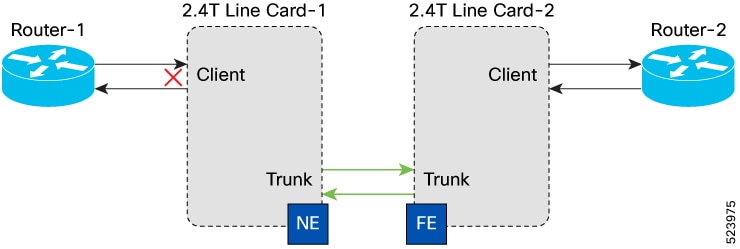
These tables list the alarms raised at the respective ports of each node.
|
NE Interfaces |
Active Alarms |
Suppressed Alarms |
|
Router 1 |
Remote Fault |
No Alarms |
|
NE_Client |
SIGLOSS |
No Alarms |
|
NE_Trunk |
No Alarms |
No Alarms |
|
FE Interfaces |
Active Alarms |
Suppressed Alarms |
|
Router 2 |
|
No Alarms |
|
FE_Client |
Remote Fault |
No Alarms |
|
FE_Trunk |
OPUK-CSF |
No Alarms |
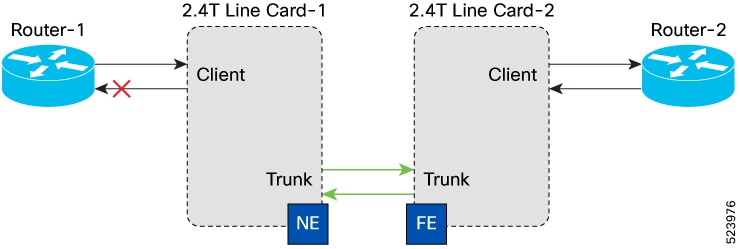
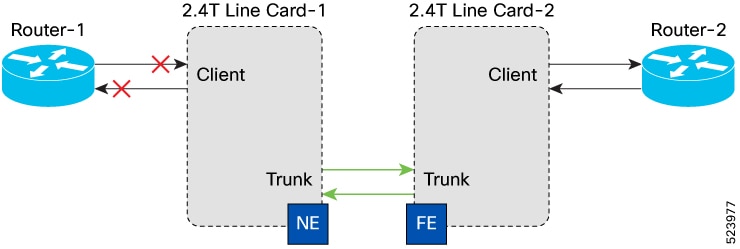
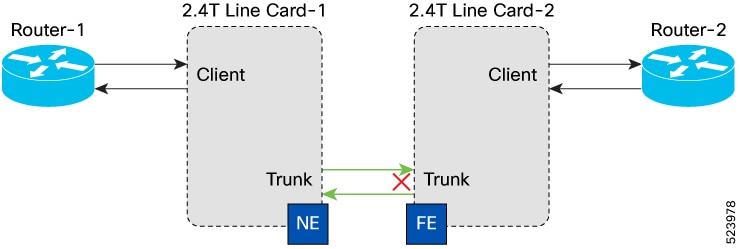
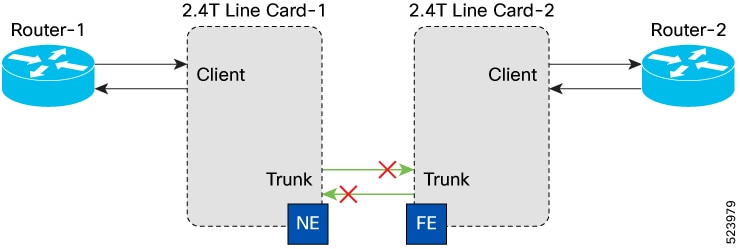
 Feedback
Feedback